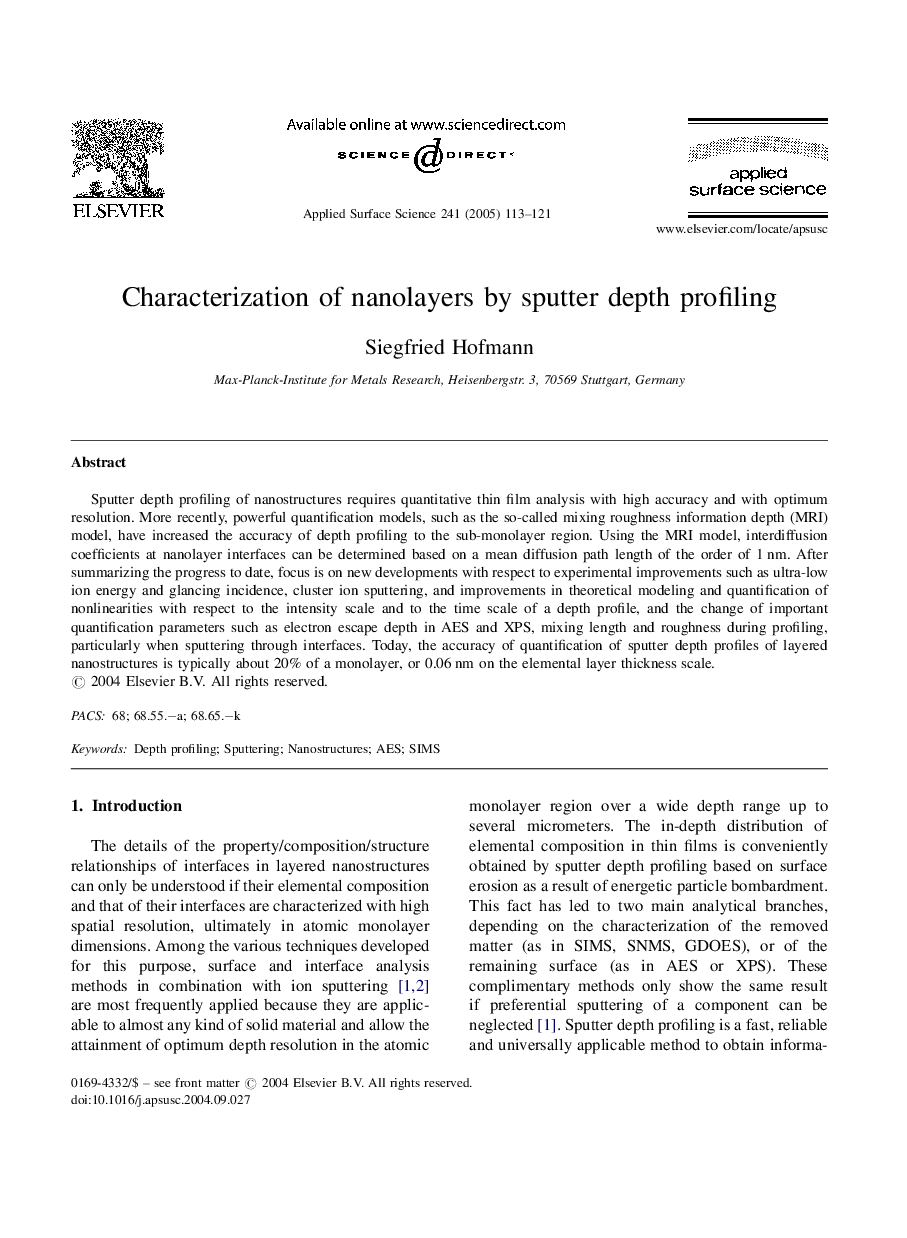| Article ID | Journal | Published Year | Pages | File Type |
|---|---|---|---|---|
| 9567522 | Applied Surface Science | 2005 | 9 Pages |
Abstract
Sputter depth profiling of nanostructures requires quantitative thin film analysis with high accuracy and with optimum resolution. More recently, powerful quantification models, such as the so-called mixing roughness information depth (MRI) model, have increased the accuracy of depth profiling to the sub-monolayer region. Using the MRI model, interdiffusion coefficients at nanolayer interfaces can be determined based on a mean diffusion path length of the order of 1Â nm. After summarizing the progress to date, focus is on new developments with respect to experimental improvements such as ultra-low ion energy and glancing incidence, cluster ion sputtering, and improvements in theoretical modeling and quantification of nonlinearities with respect to the intensity scale and to the time scale of a depth profile, and the change of important quantification parameters such as electron escape depth in AES and XPS, mixing length and roughness during profiling, particularly when sputtering through interfaces. Today, the accuracy of quantification of sputter depth profiles of layered nanostructures is typically about 20% of a monolayer, or 0.06Â nm on the elemental layer thickness scale.
Related Topics
Physical Sciences and Engineering
Chemistry
Physical and Theoretical Chemistry
Authors
Siegfried Hofmann,
